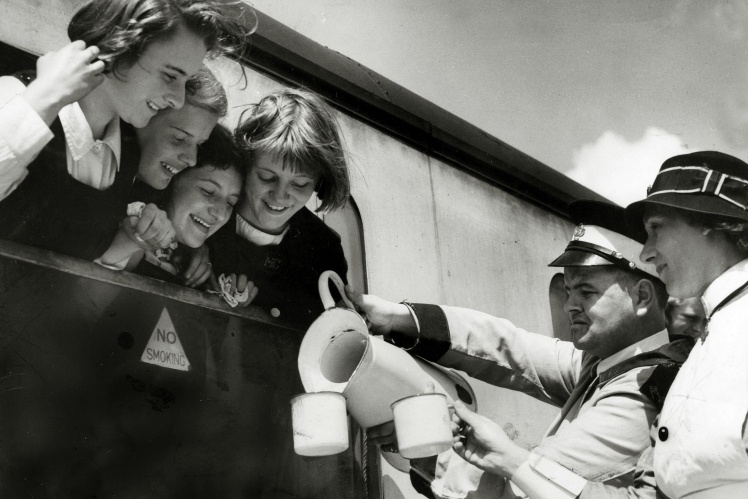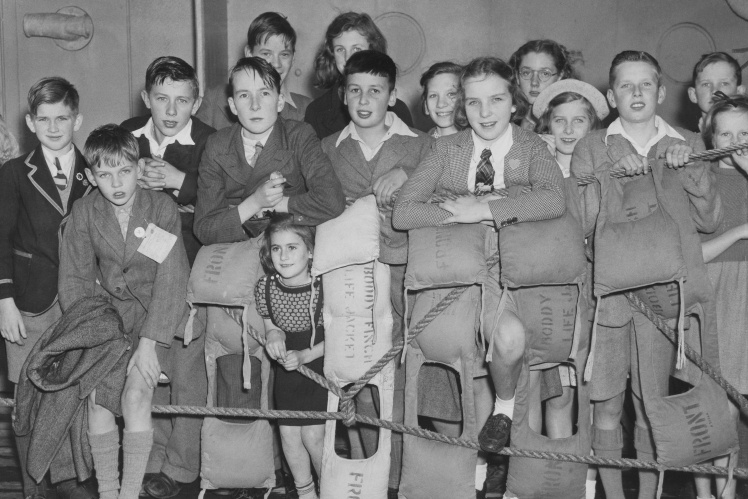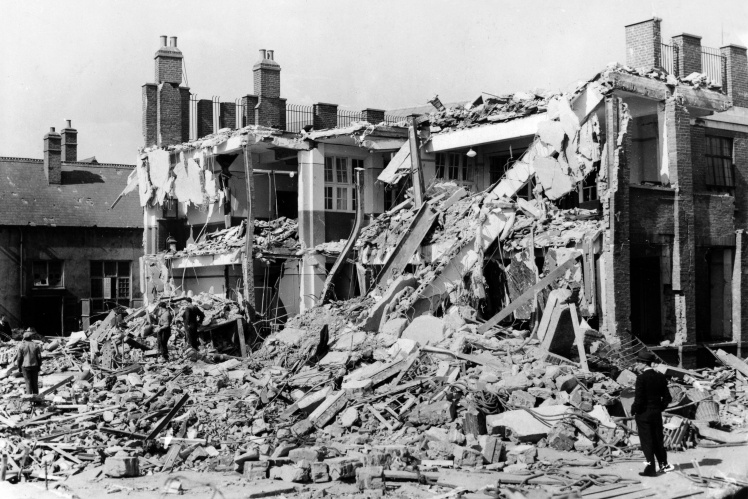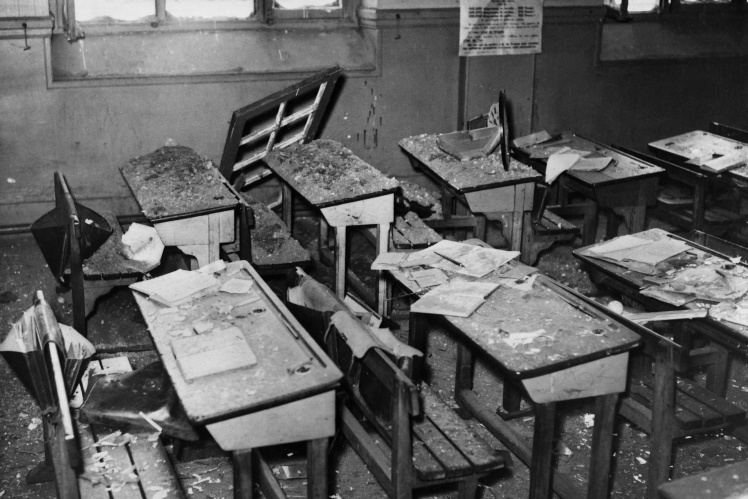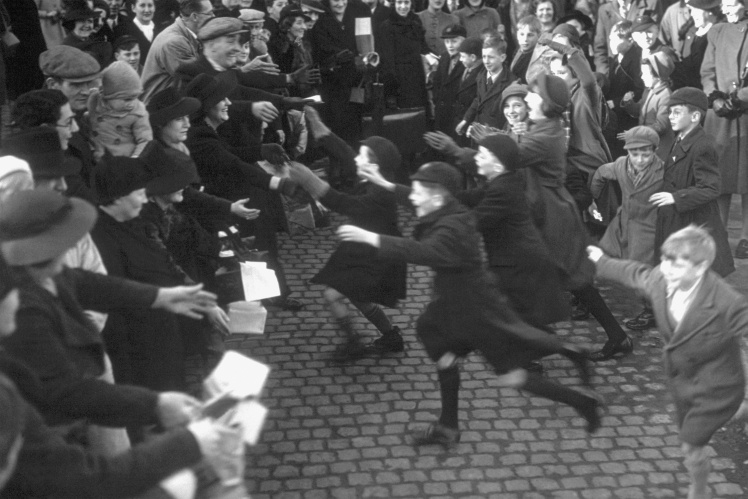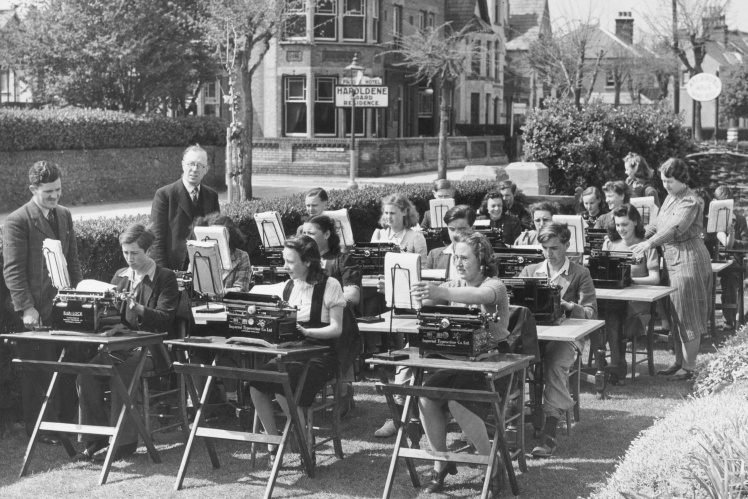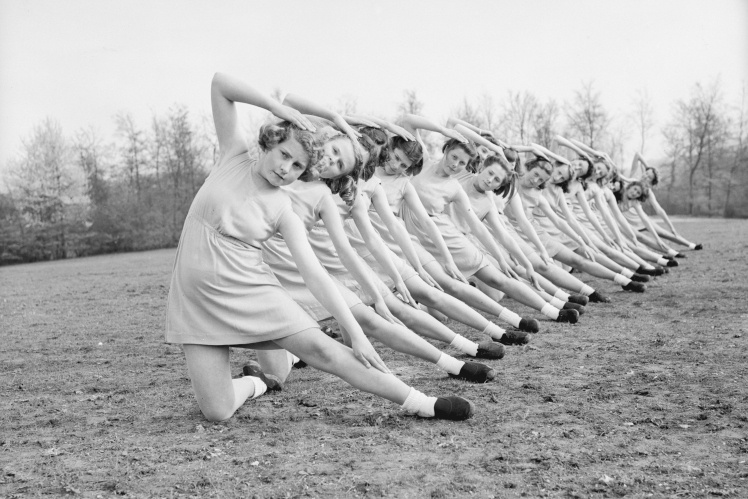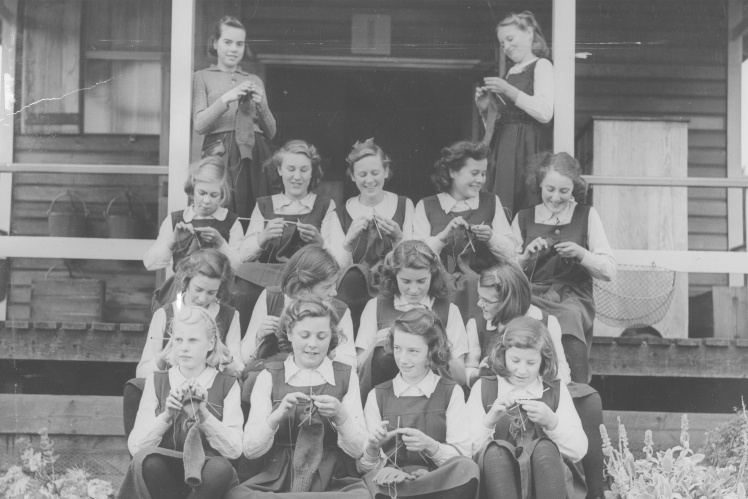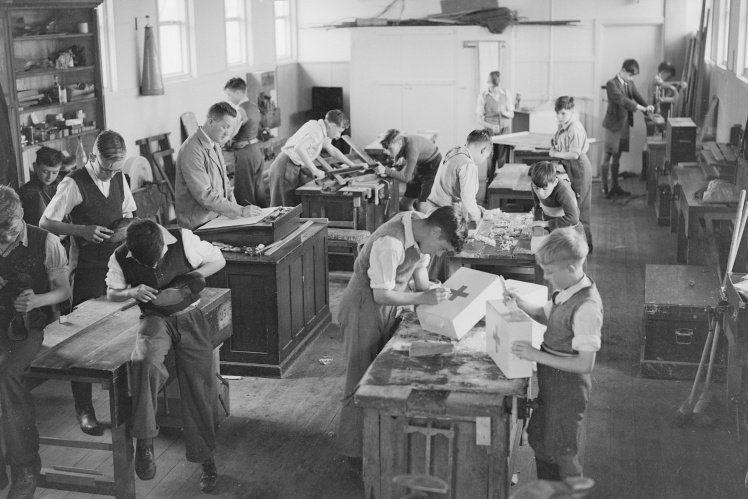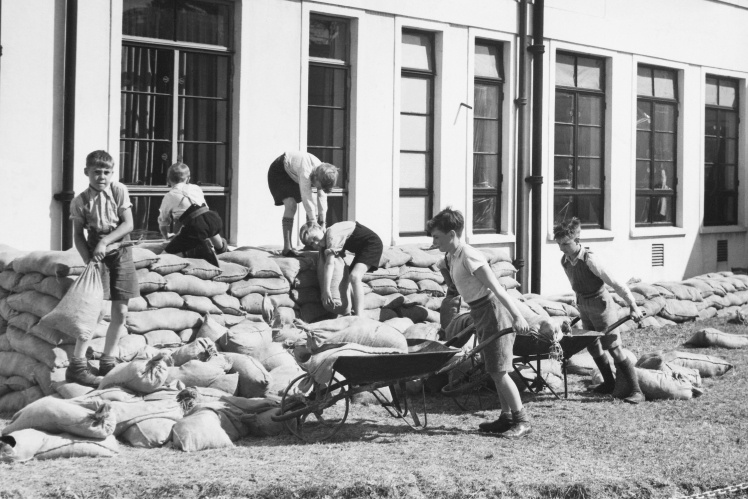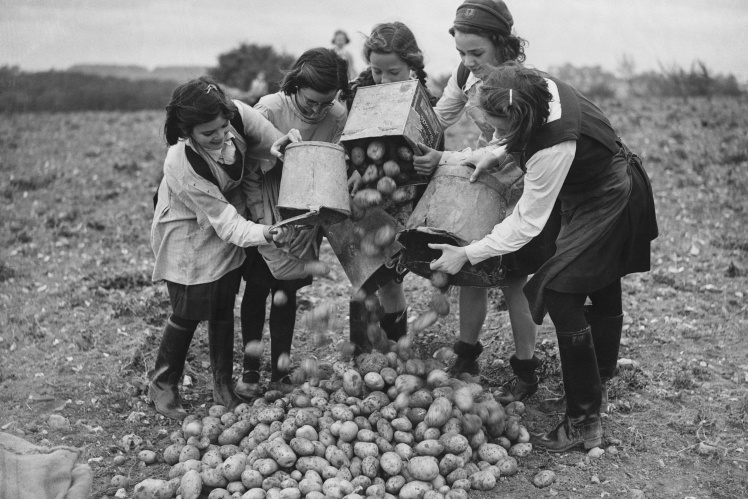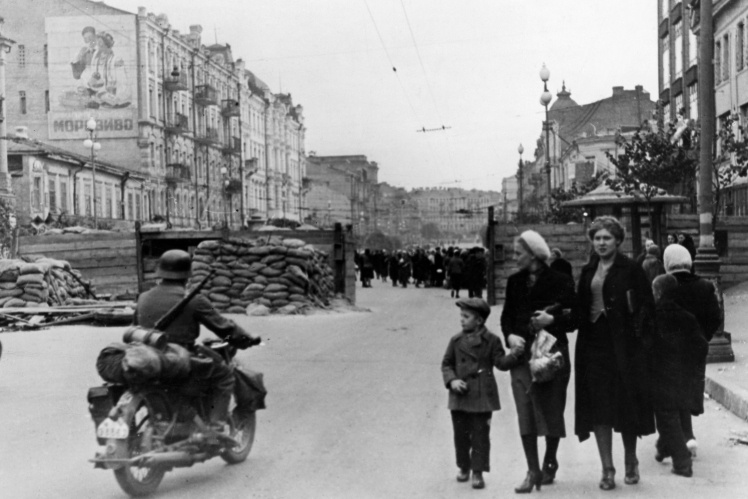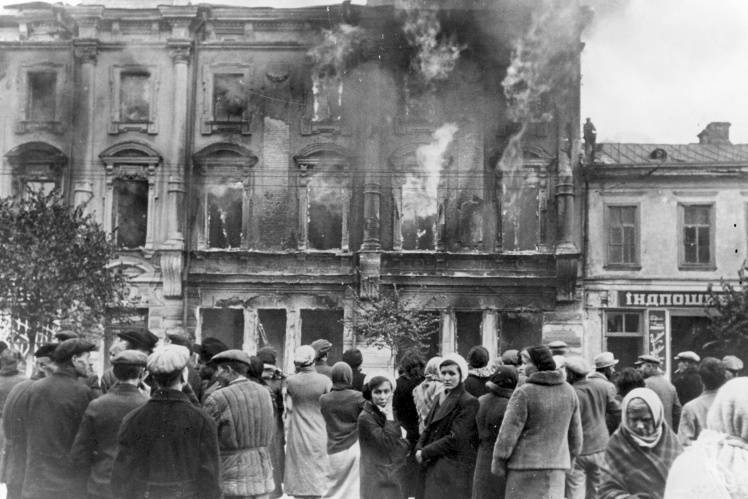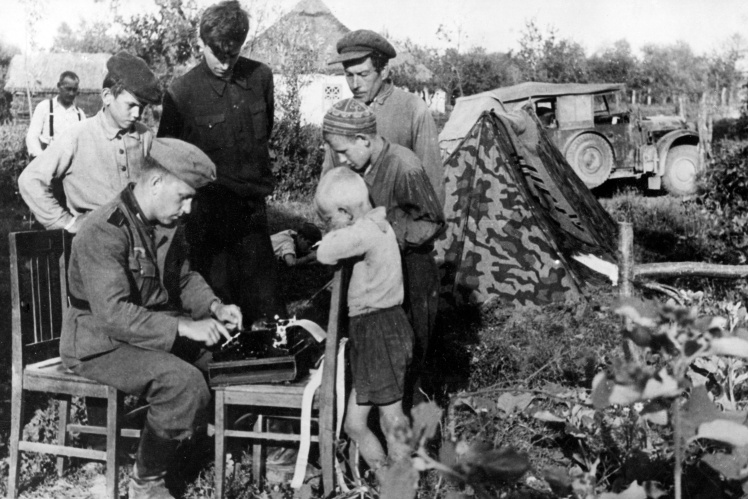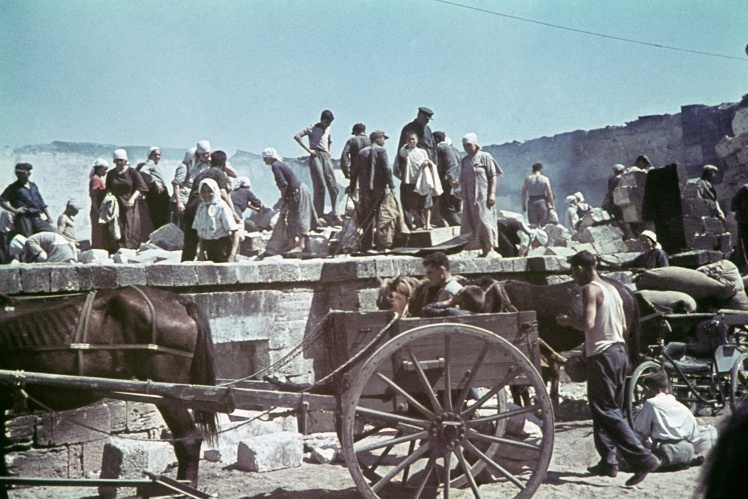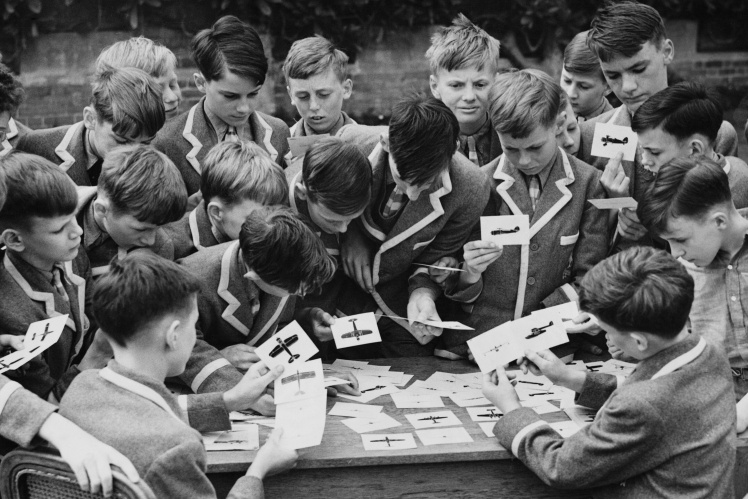How the children were evacuated
In Europe during World War II, the evacuation of unaccompanied children from war zones and war-torn areas was common. However, each country had its own peculiarities in terms of organization, logistics, and the level of involvement of the government and various organizations.
After the Soviet attack on Finland in November 1939, approximately 50,000 Finnish children left for Sweden. Moreover, the Swedish government dealt with the issues of evacuation, resettlement and support.
A Finnish boy who became a refugee after the USSR invasion, 1940.
Getty Images / «Babel'»
In France, as early as the mid-1930s, families were advised to evacuate in the event of a threat of gas or bomb attacks. But the French government in matters of evacuation was guided by the model according to which "every person can leave when he wants and where he wants." The shortcomings of this approach became apparent in 1940, when Germany launched an offensive against Western Europe. Then refugees from other countries began to flee to France. Approximately two million people arrived from Belgium alone. At the same time, almost seven million French people tried to evacuate from the war zone. All this caused logistical chaos. Children began to be taken to the countryside — sometimes with their parents, sometimes without them. However, later the children were separated from their parents and had to move several times.
French refugees at the beginning of the German invasion, 1940.
Getty Images / «Babel'»
The next waves of childrenʼs evacuation in France took place already during the German occupation. They were more organized already. Children were usually taken out of Paris and other large cities by train under the supervision of teachers or educators.
In Germany, the question of evacuation arose only in the fall of 1940, after the bombing of Allied aircraft. Children from 3 to 10 years old were evacuated together with relatives or given to foster families. And the resettlement of children aged 10-14 was coordinated by the Hitlerjugend. According to various sources, 3 to 5 million children were evacuated during the war.
Evacuation of German children to the countryside, 1943.
Getty Images / «Babel'»
The German attack on the USSR in June 1941 fell on the school holidays. However, the Soviet government initially did not even plan to evacuate the students. In September, schools in Kyiv, Odesa and many regions of the left bank of Ukraine started classes. However, the Soviet troops quickly retreated, and these areas became near-front or front-line areas. Therefore, the evacuation had to be organized hastily. Children were taken beyond the Urals, to Kazakhstan, Central Asia, and Transcaucasia.
Evacuation in the Kharkiv region during the German offensive, 1942.
Getty Images / «Babel'»
The most organized was the campaign for the evacuation of children in Great Britain. The government started preparing for it in the summer of 1938. The country was divided into three zones — areas subject to evacuation; areas that received evacuees; neutral areas that did not send or receive evacuees. Even at the planning stage, it was decided that any evacuation should be voluntary, not forced, in order to avoid panic in wartime conditions.
Evacuation of children from London, 1939.
Getty Images / «Babel'»
1 500 000 peoplewere evacuated in Britain during September 1-3, 1939, including approximately 800,000 children.
The operation to evacuate the children began on the first day of the war — September 1, 1939. Officials, policemen, railway workers, almost 100,000 teachers and 17,000 members of the Womenʼs Voluntary Civil Defense Service were involved in its organization. Children were evacuated without their parents, primarily from large cities — London, Manchester, Birmingham, Glasgow, etc. Each child had a luggage tag attached to their coat or suitcase, which indicated their name, school and chaperones. During this wave of evacuation, approximately ten thousand children were also taken to the United States, Canada, New Zealand, Australia, and other countries.
Railway workers help evacuate people from London, September 1, 1939.
Getty Images / «Babel'»
List of mandatory things that children should have with them during evacuation:
gas mask;
changeable underwear and sleepwear;
sneakers or slippers;
spare stockings or socks;
toothbrush, comb, towel and soap;
warm coat;
food supply for one day.
The evacuation was so well prepared that most of the children did not panic, but rather saw it as an adventure. “We marched to Waterloo station behind our headmaster, carrying a banner with our schoolʼs name on it. We all thought it was a holiday, the only thing we couldnʼt understand was why the women were crying," recalls James Roffey, an eyewitness of those events, who later founded the Association for the Reunification of Evacuees during the Second World War.
A woman checks the data tag of a child being evacuated from a London station, 1942.
Getty Images / «Babel'»
The second wave of evacuation lasted from May to September 1940, when Germany occupied France and began bombing Britain. They again tried to take the children not only to the rural hinterland, but also to the ocean. However, evacuation efforts to North America were halted in the summer after a German submarine sank one of the evacuation ships carrying British refugee children to Canada, killing 77 children.
The third wave of evacuations began in June 1944 in cities in the east and southeast of England, when the Germans began shelling these regions with ballistic missiles Vau-1 and Vau-2. The evacuation lasted until September. During this time, approximately one million people left dangerous areas.
British railway workers drug children as an evacuation train stops, 1940. British children arrive on an evacuation ship in New York, 1940.
Getty Images / «Babel'»
Read more:
Where and how the classes were conducted
One of the main problems that students had to face during the war was the lack of school buildings. Many schools were either damaged or completely destroyed. It was also a common practice to use schools as barracks for the military or to house the headquarters of the Civil Security Service.
A destroyed school in London, 1940. A destroyed school in Paris, 1940.
Getty Images / «Babel'»
Schools in rural areas, where most of the children were evacuated, couldnʼt accommodate so many students. Training was divided into two, three and even four shifts, but it didnʼt help. Therefore, various premises were converted into classrooms — churches, warehouses, bars and bomb shelters. And in the warm season, classes were held outdoors. "In some cases, for several weeks, teachers and children would gather at some agreed-upon location and simply wander the country roads through the fields and woods until a place was found for them," recalled Berwick Sayers, a teacher from a province in the south of England.
A teacher checks assignments during a lesson in a bomb shelter of a school in London, 1941. Children continue their studies in the bomb shelter of one of the schools in London during the air raid, 1940.
Getty Images / «Babel'»
There was also a shortage of textbooks and school equipment in wartime conditions. Another problem was the lack of teaching staff, because many teachers were drafted into the army or civil defense services. That is why classes had to be joined. Due to the lack of premises and school desks, many had to sit on the floor during lessons. And this despite the fact that lessons were often interrupted due to air strikes or power outages.
A lesson of evacuated British schoolchildren in a room converted into a classroom, October 1940.
Getty Images / «Babel'»
All these problems didnʼt escape Britain either, although the authorities managed to quickly evacuate many children. At the beginning of 1940, other difficulties appeared. Since there was no fighting or bombing on the territory of Britain at the beginning of the war, almost 60% of the evacuated children returned to their families in the cities. And at this time, most of the cityʼs schools were closed or converted for military purposes. The local authorities could not open them promptly, because it was necessary to take care of light masking and equip bomb shelters.
Children return to London from evacuation, end of December 1939. Outdoor learning in London due to lack of classroom space, May 1940.
Getty Images / «Babel'»
Because of this, approximately one million children were left without school at all. Children from poor British families lost not only education, but also free school lunches and the opportunity to undergo medical examinations in schools. As a result, morbidity among children increased sharply. And the level of crime among minors began to rise.
Community canteen at a London school, October 3, 1940.
Getty Images / «Babel'»
How school programs have changed
During the war, school curricula underwent changes. First, it was necessary to strengthen the patriotic upbringing of schoolchildren. Secondly, the hours for military physical training of students, studying the basics of medical aid, protection against air and chemical attacks have increased significantly. Pupils together with teachers often worked out a plan of action in case of an emergency evacuation to a shelter. Also, schools began to teach history and geography in more depth.
Political education in a British school, a 7-year-old schoolgirl gives a speech on Hitlerism and democracy, July 15, 1939. Evacuated British children are taught to wear gas masks, September 2, 1939. Evacuated British schoolgirls in physical education class, April 19, 1940.
Getty Images / «Babel'»
Special attention was paid to labor lessons. At the same time, more importance was attached to practical skills in creating things with their own hands that can be useful in everyday life. Boys were taught to work with wood and metal, and girls were taught to sew.
Evacuated British schoolgirls learn to weave in a labor lesson, 1943. Labor lesson for evacuated London schoolchildren, September 27, 1940.
Getty Images / «Babel'»
They tried to organize the studentsʼ extracurricular life as well. Many children joined the rear-line work: they dismantled rubble, collected metal, paper, and rags for recycling, helped on farms, joined civil defense units, and even worked in factories.
Boys help sandbag a hospital in London, 1939. Evacuated British schoolgirls help pick potatoes, 1943.
Getty Images / «Babel'»
2 000 000 000 dollarsraised by American schoolchildren to help the military, in 2021 terms, it would be equal to $30.8 billion dollars.
In some countries there were other innovations. For example, in the USA, a special school program was launched, the main purpose of which was to save and collect funds for military needs. For this, schoolchildren sold military stamps and bonds. 200,000 schools with 30 million students were involved in this program.
American schoolchildren collect waste paper to help the army, August 1942.
Getty Images / «Babel'»
How children studied in the occupied territories
Approaches to education in the territories occupied by the Germans differed significantly. In the occupied countries of Western Europe, the school curriculum has hardly changed, except for the addition of German philosophy courses for high school students.
Different countries had their own peculiarities. For example, schools in occupied France introduced a daily oath of allegiance to the head of the pro-German government, Philippe Pétain. And in the Netherlands, schools were forced to close at the end of 1944. This happened due to the German blockade, which blocked the supply of both food and coal. This period went down in Dutch history as the “Hungry Winter”, during which approximately 20,000 people died from lack of food and the cold.
Philippe Pétain speaks to French schoolchildren, 1941.
Getty Images / «Babel'»
However, the Nazi leaders had completely different plans for the schoolchildren of Eastern Europe. “There should be no universities for the non-German population of Eastern Europe. A four-year public school is enough for them. The goal of education in this folk school was to be a simple counting, at most up to 500, the ability to put a signeture, the conviction that Godʼs commandment is to obey the Germans, to be honest, diligent and obedient,” wrote the head of the SS Heinrich Himmler in 1940.
Classes in schools in the occupied territories of the USSR, 1943.
Getty Images / «Babel'»
Studying in the occupied territories of Ukraine, which were part of the USSR, was organized in accordance to this principle. From October 1, 1942, all children between the ages of 8 and 14 had to attend four-year schools. School attendance was compulsory, corporal punishment was introduced for infractions of discipline, and parents or guardians were fined or deprived of food cards for absences.
Kyiv street during the Nazi occupation, 1941. A fire in Kyiv during the Nazi occupation, 1941.
Getty Images / «Babel'»
For such schools, the Germans even tried to print their own textbooks and manuals in Russian. Their main difference was that the Soviet ideology was replaced by the Nazi ideology — instead of portraits of Stalin there were portraits of Hitler, instead of pioneers — the Hitlerjugend, instead of stories about Lenin, the lives of Nazi leaders were described. And as a foreign language, German was studied at the basic level. The essence of this approach was simple — to ideologically prepare and forcefully keep children in such schools until the age of 14, when compulsory labor was introduced. And children of this age could be taken to Germany for forced labor.
A German officer surrounded by children in an occupied Ukrainian village, August 1941. Civilian population of occupied Ukraine on forced labor during the occupation, summer of 1942.
Getty Images / «Babel'»
18 156 schoolswere completely or partially destroyed in Ukraine during the Second World War.
However, one of the main problems was the lack of facilities for classes. There was also a lack of new “ideologically correct” textbooks. Therefore, in many schools, the first classes began with students “editing” Soviet textbooks under strict supervision. There was also a shortage of teachers. And those from the local people who agreed to work in such schools automatically found themselves in the risk zone, because the intelligentsia in the occupied territories were the first to come under repression in response to partisan sabotage.
A unique situation with education has developed in Poland. The Second World War began with the occupation of the country by Germany and the USSR. Both occupation regimes banned the teaching of the Polish language in schools, and universities were closed altogether. In response, Polish teachers created an underground Secret Organization of Teachers. Classes were held secretly and for small groups. Teachers worked under the threat of arrest and shooting, but this did not stop them.
Underground training in occupied Poland, 1941.
Wikimedia
In 1942, approximately 1.5 million children studied in such conditions. And this concerned not only primary and secondary education. In the same way, underground universities, vocational schools, officer courses and even theological seminaries worked. Karol Wojtyla, the future Pope John Paul II, studied in one of these seminaries.
School classes of Polish children during the Second World War, 1942.
Getty Images / «Babel'»
Negative results
Because of the Second World War, a whole generation of children could not get a normal education. Even in Britain, where the government tried to prepare in advance, it was not possible to organize a full-fledged educational process. Thanks to the successful evacuation, it was possible to save many childrenʼs lives, but after several years of separation from their relatives, the children returned with serious psychological injuries. Some were evacuated as small children, and returned 5-7 years later as teenagers and could not adapt to life with their families.
Many children dropped out of school to work behind the scenes in factories or join the civil defense services. Many high school students volunteered for the army. And in the occupied territories, children joined the ranks of the resistance movement.
British schoolchildren study the silhouettes of German warplanes to help the Civil Defense during air raids, 1941. A Soviet high school student says goodbye to his mother before joining a partisan unit, 1941.
Getty Images / «Babel'»
World War II affected education even in non-combatant countries such as the United States and Canada. The entire economy was reoriented to military needs, so there was simply not enough money for education. No new schools were built, and those that remained lacked textbooks, desks, and other equipment.
American schoolchildren training during an air raid, 1941.
Getty Images / «Babel'»
A common problem for all was the acute shortage of teaching staff. Many teachers died on the fronts and during the occupation. All this had a negative effect on the quality of cooling in the first post-war years.
British high school girls give lessons to children from junior classes due to a lack of teachers, November 1939.
Getty Images / «Babel'»


